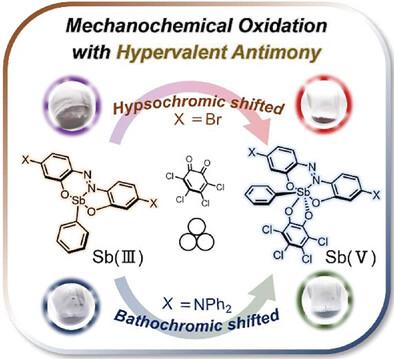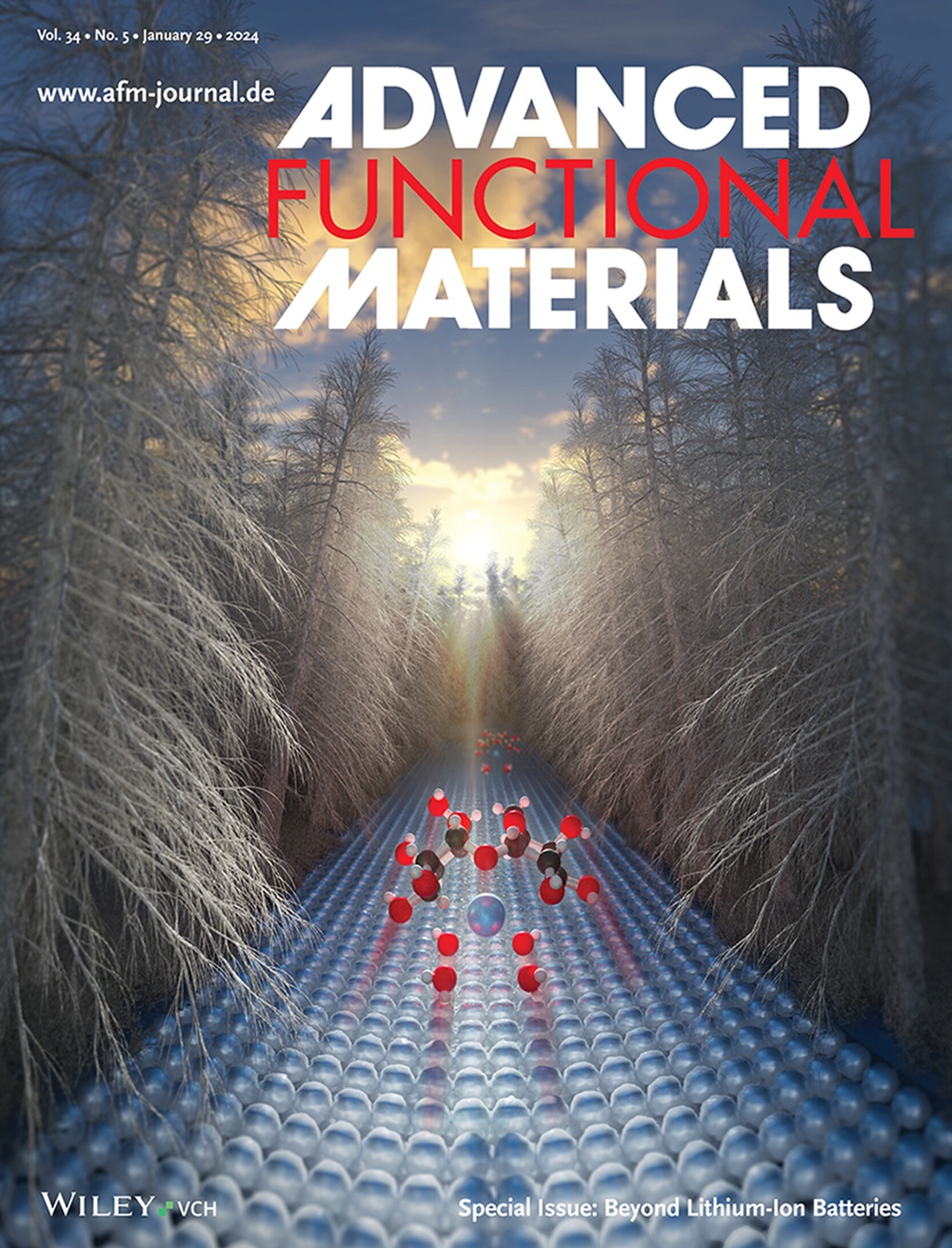基于超价含锑共轭分子的刺激响应型光学材料
IF 18.5
1区 材料科学
Q1 CHEMISTRY, MULTIDISCIPLINARY
引用次数: 0
摘要
刺激响应材料可将各种目标刺激转化和放大为可观测的信号,因此已被应用于传感器件。人们一直致力于探索有效的分子设计,以利用涉及各种元素的 π 共轭分子的独特光电特性获得刺激响应行为。本研究的重点是通过改变超价锑的氧化数来调节π共轭支架的电子状态。这项研究表明,高价锑和π-共轭框架之间分子内相互作用的强度可以通过配体结构、取代基效应和高价锑的氧化数变化来调节。特别是,高价锑在固态下的氧化反应实现了以光带的次色和浴色波长偏移为代表的颜色变化。值得注意的是,量子化学计算可以准确预测颜色变化的方向。这些发现基于π共轭支架与超价主族元素之间的电子相互作用,为先进的刺激响应材料提供了合理的设计策略。本文章由计算机程序翻译,如有差异,请以英文原文为准。

Stimuli-Responsive Optical Materials Based on Hypervalent Antimony-Containing Conjugated Molecules
Stimuli-responsive materials have been applied for sensor devices because they can transform and amplify various target stimuli into observable signals. Much effort has been devoted to exploring effective molecular designs for obtaining stimuli-responsive behaviors by taking advantage of the unique optoelectronic properties of π-conjugated molecules involving various elements. This study focuses on the modulation of the electronic state of the π-conjugated scaffolds by the oxidation number change of the hypervalent antimony. This study demonstrate that the strength of the intramolecular interaction between hypervalent antimony and the π-conjugated framework can be tuned with ligand structure, substituent effect, and oxidation number shifts of hypervalent antimony. In particular, the color changes represented by hypsochromic and bathochromic wavelength shifts of optical bands are achieved by the oxidative reaction of hypervalent antimony in the solid state. Significantly, the direction of the color changes can be confidently predicted by quantum chemical calculations. The findings, based on the electronic interaction between π-conjugated scaffolds and hypervalent main-group elements, provide logical design strategies for advanced stimuli-responsive materials.
求助全文
通过发布文献求助,成功后即可免费获取论文全文。
去求助
来源期刊

Advanced Functional Materials
工程技术-材料科学:综合
CiteScore
29.50
自引率
4.20%
发文量
2086
审稿时长
2.1 months
期刊介绍:
Firmly established as a top-tier materials science journal, Advanced Functional Materials reports breakthrough research in all aspects of materials science, including nanotechnology, chemistry, physics, and biology every week.
Advanced Functional Materials is known for its rapid and fair peer review, quality content, and high impact, making it the first choice of the international materials science community.
 求助内容:
求助内容: 应助结果提醒方式:
应助结果提醒方式:


